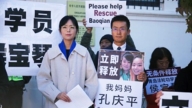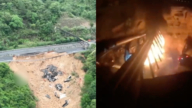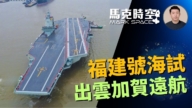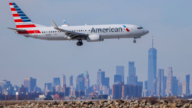【新唐人2011年8月26日讯】8月22号上午,温州动车事故检查组到“中国铁路通信信号集团公司”检查时,公司董事长马骋突发心脏病去世。舆论普遍认为,马骋因为压力过大而崩溃。在此之前,下属公司“北京全路通信信号研究设计院”发表声明表示,愿意对事故承担责任。
据《财新网》引述马骋朋友的话报导说,55岁的马骋原来没有心脏病史,却被诊断为心脏病突发。《南方都市报》记者赶赴北大医院,希望查看死亡病历,遭到拒绝,负责医生表示,“我们只能说,电视上公布的死因是正确的。”
马骋是“通号集团”前任总经理,去年底集团改制后成为董事长。
导致7•23事故的一个主要原因,据了解是列控中心资料获取驱动板出现软件逻辑错误,致使列控中心不能即时、正确的接收资料并发送正确命令。而“通号集团”是甬台温线的列控设备提供商,旗下的“全路通信信号设计院”正是软件设计单位。事故后,“通号集团”成为众矢之的。
《广州日报》报导,7.23事故后,“通号集团”推迟了公司上市计划。而《21世纪经济报导》披露,“通号集团”上下员工都接受过国务院调查组问询,包括“马骋也被叫去谈过话”。
《每日经济新闻》报导援引“7•23”事故调查组专家组副组长王梦恕原话说,“信号是有些问题,也不至于追尾。”。王梦恕意味深长的指出,7.23事故诱因肯定是“管理的问题大于技术的问题”。
北京学者彭定鼎对马骋之死表示同情。
彭定鼎(北京学者):“如果我要是他,我就不会这样紧张了。我已经说过多少次了,关于事故,不是在于引发原因是什么。要点在于,当出现故障以后,一个预案,针对故障的安全预案为什么没有启动。”
《华尔街日报》报导,中共当局本周表示,已就造成两列高速列车追尾并导致40人死亡的事故原因,得出了初步调查结果,将于9月中旬之前公布这一结果。“安全生产监督管理总局”发言人黄毅说,调查组现已初步完成了事故的技术报告,以及事故直接原因的专家组报告,下一步的工作即将进入事故责任的认定阶段。
黄毅周一在接受《新华社》记者访问时说,这起事故既暴露出信号系统设计上的缺陷,同时也反映出事故发生后,应急处置不力以及安全管理上存在的漏洞。黄毅重申这是一起可以避免的事故。
中国高速铁路信号系统是按照欧洲标准由中国自主研发的。“中国通号集团公司”在包括尚比亚、伊朗和朝鲜在内的至少20个国家拥有合资企业。
《南都》的报导说,“通号集团”作为“高铁大跃进”的直接受益者,2006年利润为3亿元,营业收入42亿元。2008年,利润为5.6亿元,营业收入为62.1亿元。2010年,公司利润和营业收入翻两番,利润为12.6亿元,营业收入达到120.5亿元。
“通号集团”在深圳有两个重要的轨道交通项目,一是广深港客运专线,一个是地铁2、3号线的信号专案。根据“通号集团”官网公布的信息显示,深圳地铁2号线由“中国通号”承担总体安装,3号线由“中国通号济南有限公司”参与建设。
新唐人记者秦雪、萧宇采访报导。
Wenzhou Train Crash & Ma Cheng’s Death
The morning of Aug. 22, when the Wenzhou train crash
inspection team arrived at the China National
Railway Signal & Communication Corporation (CRSC),
the company’s president Ma Cheng died of a heart attack.
Public opinion generally believes that Ma Cheng collapsed
under the excessive pressure.
Before that day, the corporation’s affiliated company,
Beijing National Railway Research & Design Institute
of Signal & Communication(CRSCD), said in a statement
that it was willing to take responsibility for the crash.
A Caixin.com report quoted the words of Ma Cheng’s friend
that Ma Cheng, age 55, had no previous history of heart
problems, but was diagnosed with a sudden heart attack.
A Southern Metropolitan Daily journalist went to the hospital
to see the death records but was rejected.
The doctor in charge said, “We only can say that
the cause of death announced on TV is correct."
Ma Cheng, the CRSC’s ex-general manger was appointed
president after the company’s restructuring in late 2010.
It is understood that a major cause of the 7.23 train crash
was due to program logic errors of the data acquisition board.
The train control center was thus unable to receive
real-time correct data and send the correct commands.
CRSC is the train control equipment supplier of the said
accident line.
Its affiliated company CRSCD is responsible
for the software design, and became the target of
public criticism after the Wenzhou crash accident.
Guangzhou Daily reported that after the 7.23 train crash
CRSC postponed its plan to list its stocks on an exchange.
21st Century Business Herald revealed that all of CRSC’s
employees had been questioned
by the State Council investigation team
and “Ma Cheng was also called for inquiries."
National Business Daily quoted the words of
Wang Mengshu, an accident inspection expert:
“There was something wrong with the signal,
but it unlikely went so far to cause the rear-end accident.”
Wang said meaningfully that the cause of 7.23 train crash
definitely “has more to do with management problems
than with technical problems.”
Beijing-based scholar Peng Dingding
expressed his sympathy for Ma Cheng’s death.
Peng Dingding (Beijing-based scholar):
If I were him, I wouldn’t be so nervous.
As I’ve said many times in regards to the accident,
the point is not to focus on the causes
but on the contingency plan. Why wasn’t it applied then?
Wall Street Journal reported that
the Chinese authorities said this week that
the preliminary investigation’s results had come out
and would be announced before the middle of September.
Huang Yi, spokesman for the State Production Safety
Supervision & Management Office said that
the inspection team has finished the initial technical report
on the accident and expert team’s direct cause report.
The next step is to identify what caused the crash.
Huang Yi told the Xinhua News Agency that the accident
exposed not only the signaling systems’ flaws, but also the
poor contingency management and safety management.
He reiterated that this was an avoidable accident.
China railway signal system is independently developed
and is in accordance with European standards.
CRSC’s subsidiary joint ventures are
operated in at least 20 countries
including Zambia, Iran and North Korea.
Southern Metropolitan Daily reported that CRSC is a direct
beneficiary of high-speed railway’s Great Leap Forward.
In 2006, its profit reached RMB 300 million
with revenues of RMB 4.2 billion.
In 2008, the profit was RMB 560 million with
revenues of RMB 6.21 billion.
In 2010, the Corp quadrupled profit to RMB 1.26 billion
and revenues to RMB 12.05 billion.
CRSC has contracted 2 important rail projects in Shenzhen.
One is Guangzhou-Shenzhen-Hong Kong Passenger Line
the other is the signal project for Subway Line 2 and Line 3
CRSC’s website said that the CRSC is responsible for
the overall installation of Shenzhen Subway Line 2,
and CRSC Jinan Engineering Co., Ltd. for Subway Line 3.
NTD reporters Qin Xue and Xiao Yu































